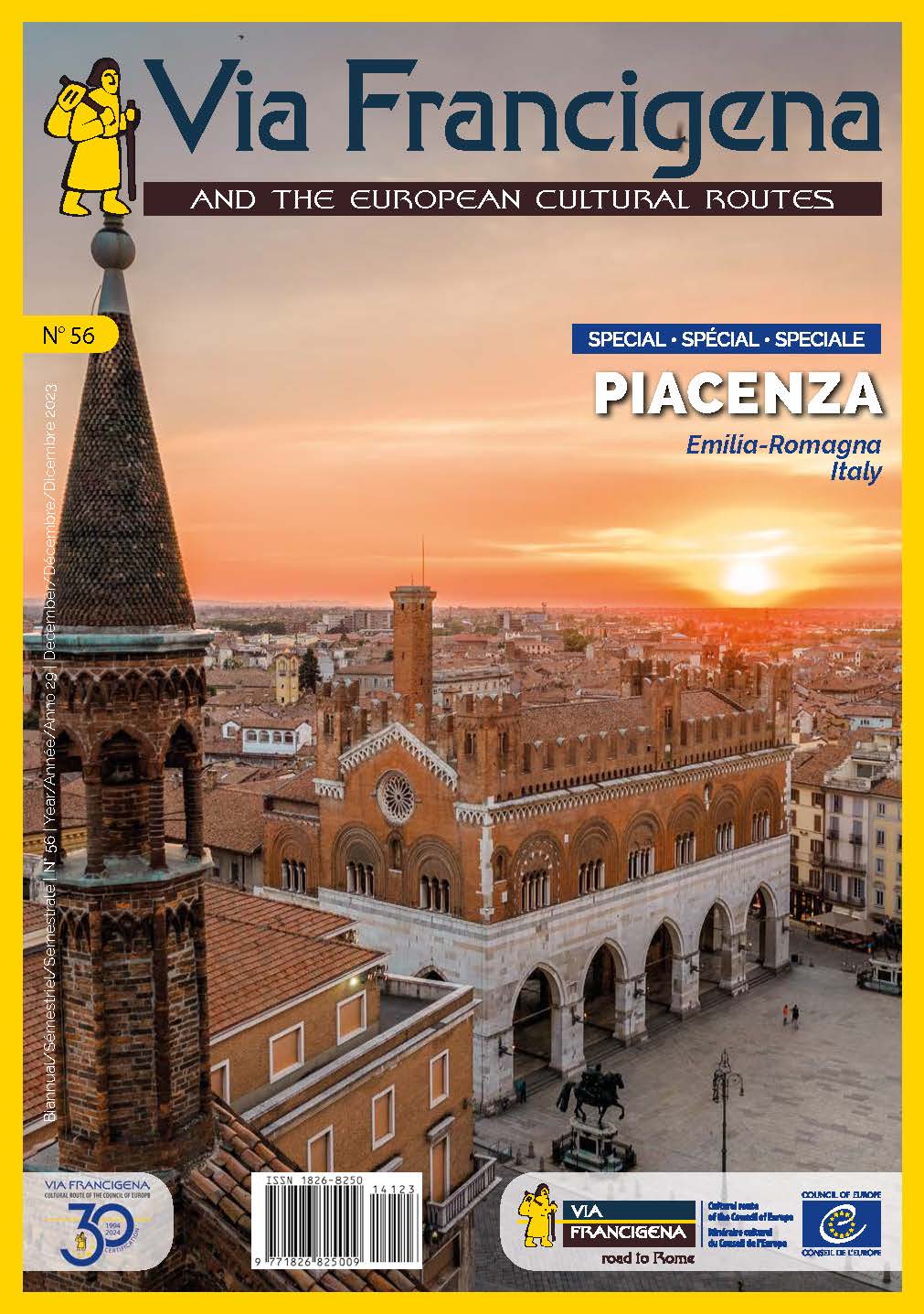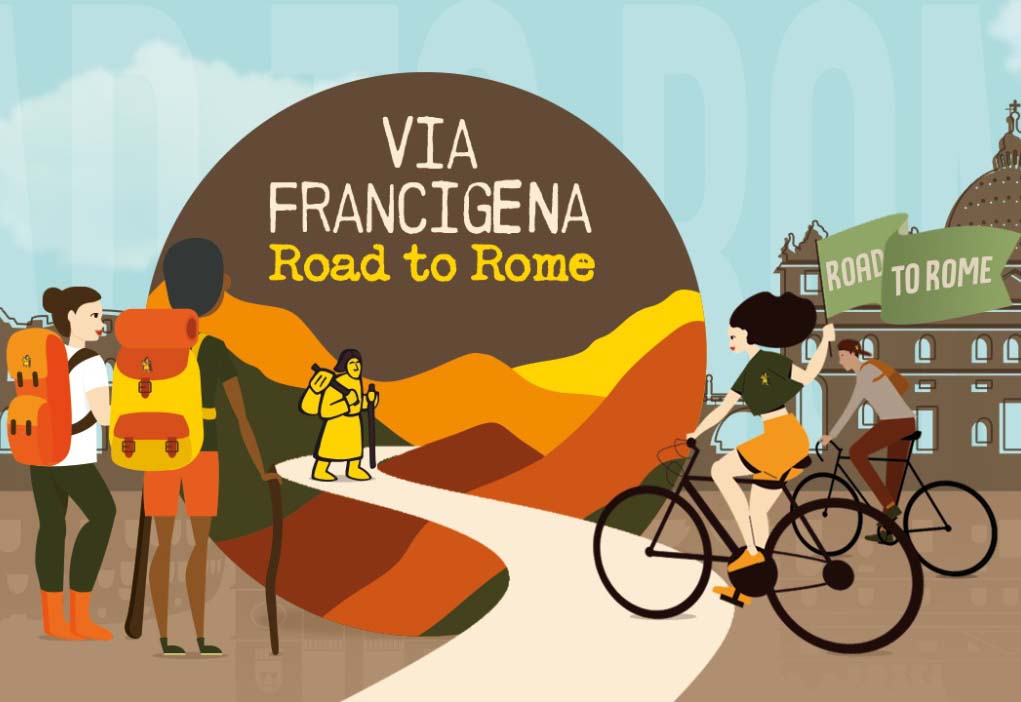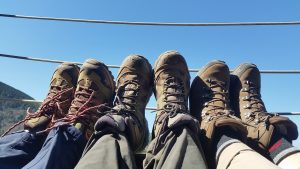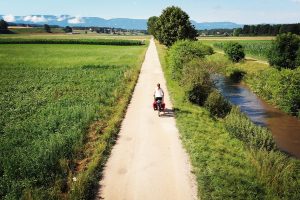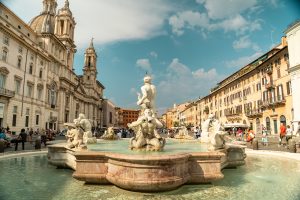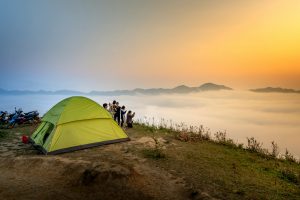Here we are at the fourth chapter of our travel diary, which recounts the entire Via Francigena route in preparation for the 2025 Jubilee.
With its 3,200 km, this historic medieval route crosses five countries (England, France, Switzerland, Vatican City, and Italy), sixteen regions, and over six hundred municipalities, as detailed in the itinerary that can be travelled both on foot and by bicycle. Starting from Kent in the United Kingdom, the path passes through the regions of Haute-de-France, Grand Est, and Bourgogne-Franche-Comté in France; the cantons of Vaud and Valais in Switzerland; and the regions of Aosta Valley, Piedmont, Lombardy, Emilia-Romagna, Liguria, Tuscany, Lazio, Campania, and Puglia in Italy. Finally, in Rome, the Vatican State, a symbol of the Jubilee, marks the journey’s end.
For these special regional features, created in collaboration with Regione Lazio, we decided to travel up the boot of Italy from Santa Maria di Leuca (Puglia) and tell the story of the Via Francigena from south to north, taking you with us to discover each region, immersing ourselves in its scenic, historical, and gastronomic wonders. Along the way, you will find plenty of travel tips about the route, highlighting the best stages and some interesting facts.
Shall we begin our journey?
Let’s start!
The Via Francigena in northern Lazio
The Via Francigena in northern Lazio stretches for approximately 170 km, divided into 8 stages that pass through scenic landscapes combining nature, art, and discovery. The route starts in Acquapendente, on the border with Tuscany, and ends in Rome, the capital of Italy, a city steeped in endless history and culture. This section, which officially begins our story of the Via Francigena in the north, is of moderate difficulty, with some sections featuring medium elevation changes, especially in the hilly and mountainous areas. Along the way, there are historical villages, archaeological sites, and evidence of the pilgrims’ passage towards Rome, the stage for one of the most iconic journeys in European history and the culmination of a path with deep roots in religious history and ancient world legends.
Table of Contents
History: The Final Stage to the Eternal City
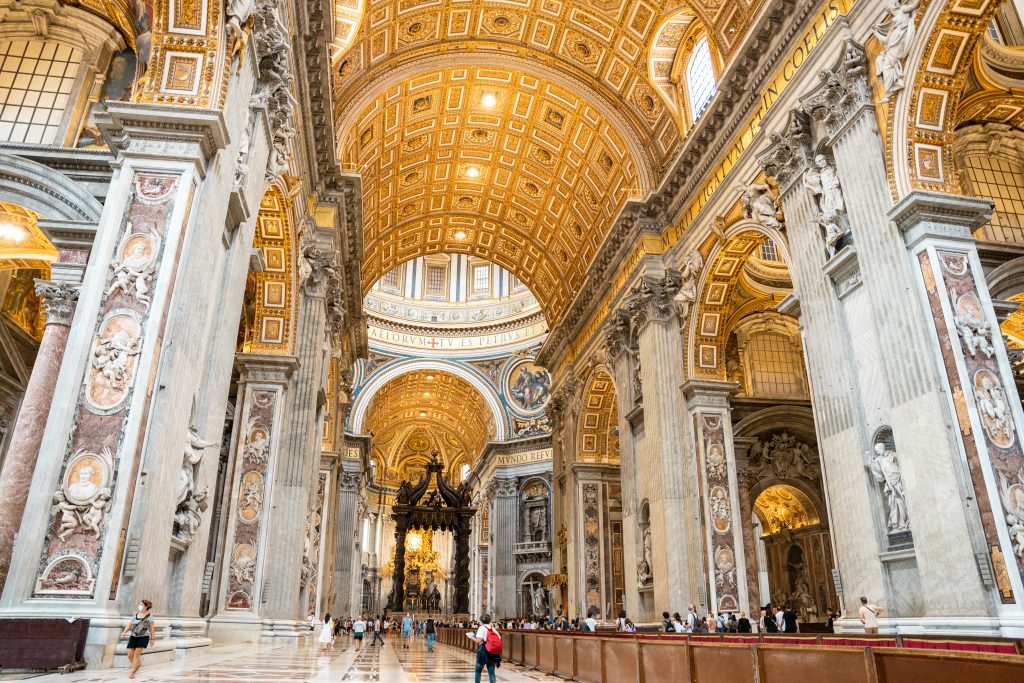
Lazio has always been the final destination for pilgrims from all over Europe. The last stage of their journey was the Eternal City, a place of extraordinary spiritual, historical, and cultural significance. These pilgrims walked along ancient roads like the Via Francigena, which connected northern Europe to Rome, arriving in the capital to pay homage to the tomb of St. Peter, one of Jesus’ twelve apostles and the founder of the Catholic Church.
Reaching Rome was a moment of deep devotion but also immense emotion. After enduring a long and arduous journey, the pilgrims would finally find rest and peace in the sacred places that the city offered. This tradition has survived the test of time, and even today, walkers from all over the world embark on this path to reach Lazio and, specifically, the Eternal City, to marvel at its wonders—religious symbols, as well as cultural and artistic landmarks.
Upon reaching Rome, the journey continues towards St. Peter’s Basilica, built by Emperor Constantine around 320 AD on the site of the Apostle’s crucifixion, and later rebuilt in its current form in the 16th century. Here, those who have walked the Via Francigena and possess the official Credential from the European Association of the Via Francigena Ways are welcomed by the hospitality service of the Fabbrica di San Pietro in collaboration with the Homo Viator Foundation, which since 2024 has been supporting pilgrims, offering them rest and preferential entry into the Basilica. Additionally, at St. Peter’s, pilgrims can receive the Testimonium, a certificate confirming the completion of the journey, documenting the effort made over at least the last 100 km.
A little curiosity: why the “Eternal City”?
Rome, the “Eternal City”, owes its nickname to its long and indissoluble connection with eternity, dating back to the Roman Empire. The ancient Romans believed the city was destined to last forever, a symbol of power and the centre of the world. This belief was reinforced by myths and legends, such as those recounted by Virgil in the Aeneid, which depicted Rome as a city destined to rule without end. Despite the fall of the Empire and periods of crisis, Rome has continued to thrive, maintaining its central role in Christianity and adapting to historical changes. Today, thanks to its ancient monuments, Rome remains a symbol of continuity and resilience—a city that stands the test of time, between culture, history, and spirituality.

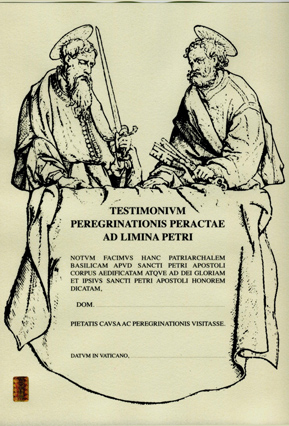
Spiritual sites: St. Peter’s Basilica, the Rocca dei Papi, and Viterbo
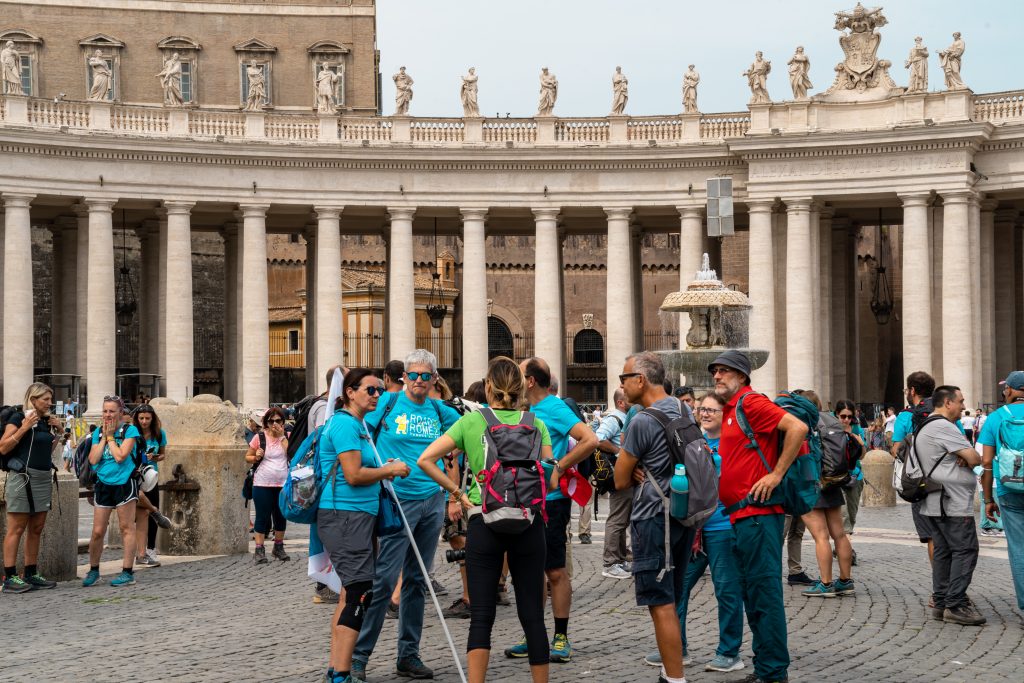
As we have mentioned so far, the spiritual heart of Rome, and particularly of Lazio, is represented by St. Peter’s Basilica. The Basilica, a symbol of the spiritual power of the Catholic Church, has been a pilgrimage destination for centuries and continues to be one today. Its grandeur, the imposing dome, and the frescoes by Michelangelo that adorn it are a testament to a journey of faith, art, and culture that has deep roots in history.
Outside of the capital, in the province of Viterbo, another place of great religious significance is the Rocca dei Papi in Montefiascone, an essential stop for pilgrims. Built by Innocent III at the end of the 12th century, the Rocca sits at 633 metres above sea level and was constructed to defend the town of Montefiascone. From its position overlooking Lake Bolsena, it offers a view of the entire valley, and with binoculars, from the Pilgrim’s Tower, one can spot Tuscany, Umbria, and Abruzzo. Over the years, the building underwent numerous changes at the request of successive Popes, but gradually, the Rocca began to decline. It wasn’t until the late 20th century that its ruins were finally restored. Today, it is possible to visit this historically significant site, which houses the Museum of Architecture by Antonio da Sangallo the Younger, a Renaissance artist of great importance to the history of the Rocca and the Tuscia region.
Another city with a strong spiritual character is Viterbo, known as the “City of the Popes“. Founded by the Etruscans and later conquered by the Romans, it became a papal seat in 1125. Among the must-see sites in Viterbo is the Papal Palace, built in 1266 as a fortress residence for the popes, a magnificent example of Gothic style, with bifore windows, battlements, and an arched loggia. In the same square, the Cathedral of San Lorenzo, dating from the 12th century and later altered, features a Renaissance-style façade and a Gothic bell tower. Of historical interest is the Church of Santa Maria Nuova in Piazza del Gesù, where, in addition to 14th to 16th-century frescoes, one can also find the pulpit from which Thomas Aquinas preached.
A little curiosity: Viterbo and the conclave
In 1271, the first conclave in history was held in Viterbo. After nearly three years of waiting for the election of a new pope, the citizens of the city decided to lock the cardinals inside the Papal Palace, cum clave (under lock and key), forcing them to survive on bread and water until they chose the new pontiff. And thus, the modern conclave was born.

Traditions: the Rock of the Sutri Archaeological Park

In the heart of Lazio, with ancient origins, lies the city of Sutri, said to have been founded by Saturn, and one of the most fascinating and significant sites both archaeologically and environmentally. This small fortified town, built on a tuff spur—a type of sedimentary rock—has its origins in the Middle Ages.
However, the city was already flourishing during the Etruscan period, with the Etruscans creating a necropolis and cave roads; it also played a strategic role on the Via Cassia during Roman domination.
The most significant symbol of the city is the Sutri Archaeological Park, an extraordinary place containing monuments of immeasurable historical value. The amphitheatre, the city’s iconic structure, is entirely carved from tuff, without the aid of supporting masonry, and could hold about 7,000 spectators. Continuing along, visitors are captivated by the necropolis, where 64 tombs, also carved into the tuff, line the Via Cassia.
Slightly further north is the votive chapel dedicated to the Madonna del Prato, originally probably dedicated to St. Michael the Archangel. Known to most as the Mithraeum of Sutri, this chapel contains paintings depicting the phases of Christian worship through various historical periods.
Further still, on the hill above the Archaeological Park, one can visit Villa Savorelli, which features an architectural style that spans from the Renaissance to the Romantic Era. Its Italian-style garden and the breathtaking panoramic views of the surrounding area are particularly striking.
A little curiosity: the legend of the name Sutri
According to legend, Sutri was founded by the god Saturn, the father of the gods, whose Etruscan name, Sutrinas, is believed to be the origin of the city’s name. On its coat of arms, Saturn is depicted on horseback, having put down his sword and lifting a bundle of wheat ears, symbolising the prosperity and fertility of the land of Sutri. Tradition has it that Saturn, the creator of the gods and men, founded this city, which over the centuries came to be known as the “Ancient City.”
Gastronomy: pecorino romano, cacio e pepe, and Est! Est!! Est!!! wine from Montefiascone
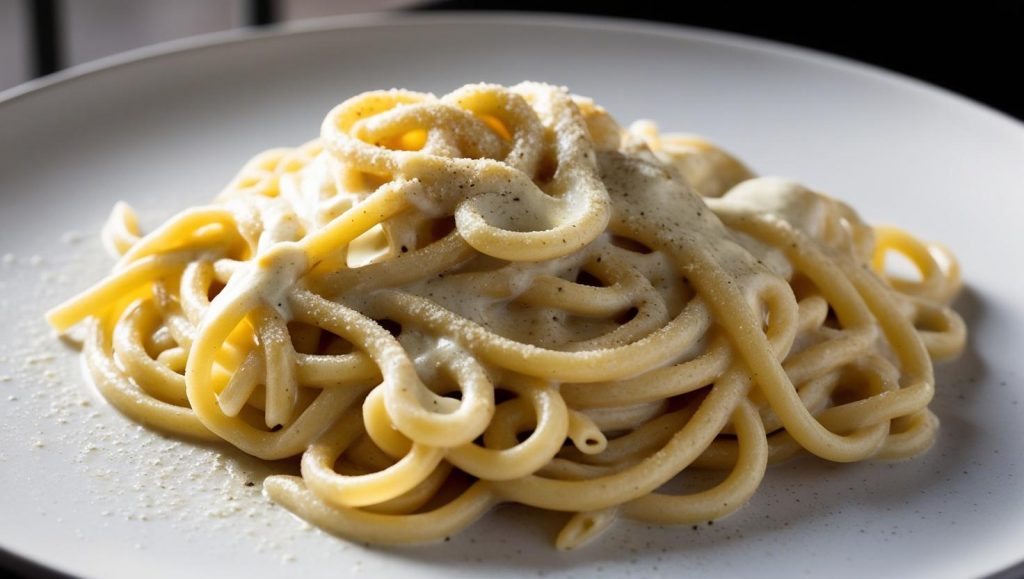
As with any respectable journey through a region, we cannot overlook the gastronomic aspect. Lazio’s cuisine is renowned for its simple yet intense flavours, deeply rooted in rural tradition.
To showcase its flavours, we begin with Pecorino Romano, a cheese with a strong flavour, featuring a slightly eyeleted texture that ranges from white to straw-yellow and takes on spicy nuances. This food is one of the gastronomic symbols of the area.
One of the most famous dishes, however, not only in Lazio but worldwide, and an icon of Italian cuisine, is cacio e pepe pasta, a very simple recipe that has become one of the most beloved culinary experiences for walkers everywhere. Made with just three ingredients—pasta, very aged Pecorino Romano cheese, and black pepper—this dish has a strong, enveloping taste, like the creamy cheese that makes it up.
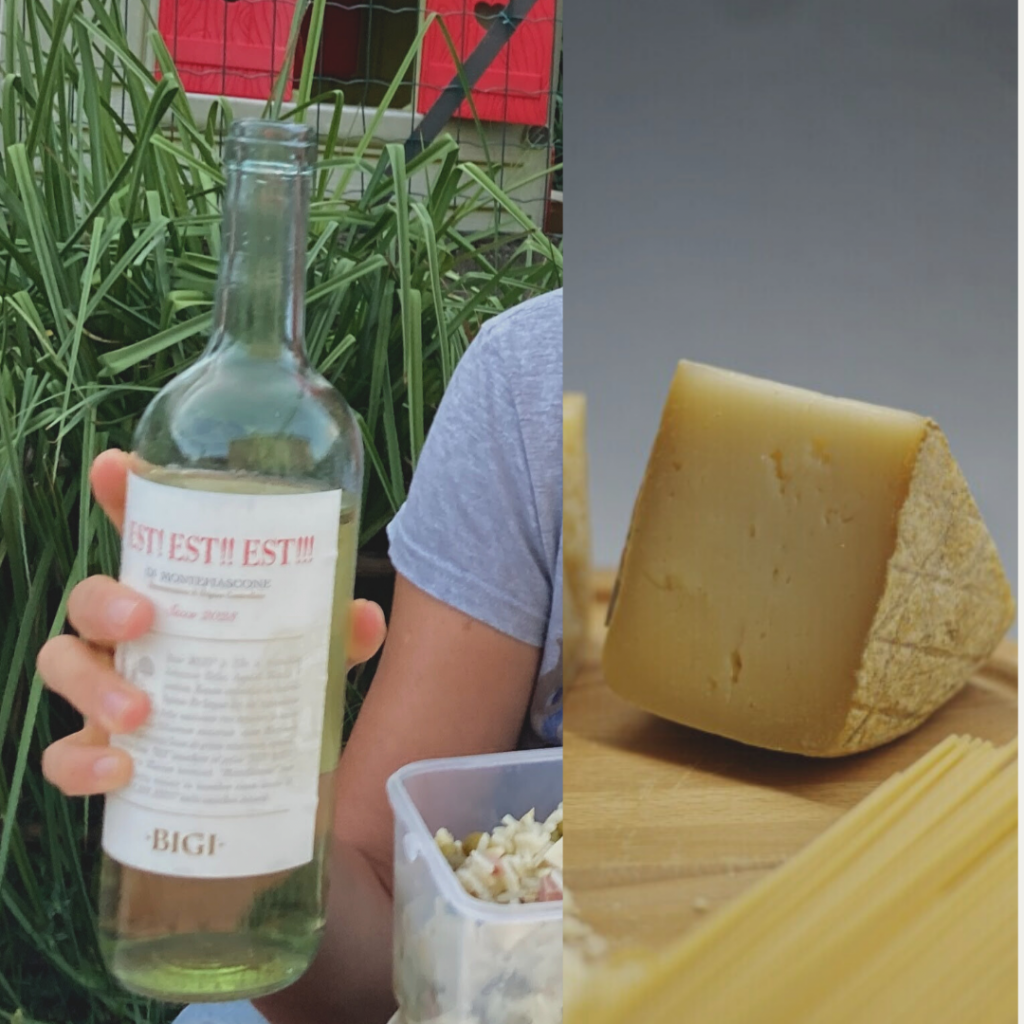
Another product that has accompanied pilgrims in Lazio for centuries is the wine Est! Est!! Est!!! from Montefiascone. This pale yellow wine, made from Trebbiano, Roscetto, and Malvasia grapes, is aromatic, floral, and fruity. Produced in the Montefiascone area, in the province of Viterbo, it has obtained the D.O.C. designation. This drink is perfect for aperitifs or for pairing with fish dishes.
A little curiosity: the origin of the name Est! Est!! Est!!!
In 1111, Henry V of Germany was heading to Rome to be crowned Emperor of the Holy Roman Empire, accompanied by Cardinal Johannes Defuk, who was known for his passion for wine. The cardinal had instructed his servant, Martin, to precede him and find the best taverns along the way, marking them with the word “Est” to indicate good wine. As instructed, Martin marked the best inns along the route, but upon reaching Montefiascone, he found such excellent wine that he wrote “Est! Est!! Est!!!”, with six exclamation points to emphasise the recommendation, next to the tavern. This note was later shared with the cardinal. However, the story has a tragic ending. During the return journey, Defuk, after drinking excessively at the inn, died from alcohol poisoning. He was buried in Montefiascone, and his tomb, located in the Church of San Flaviano, still bears the inscription, probably written by the faithful servant Martin, which recounts his tragic end: “Est! Est!! Est!!! My lord Johannes Defuk died from excessive drinking.”
Ideas for walking routes for a weekend or holiday banks
2-Day Itinerary (Campagnano – Rome)
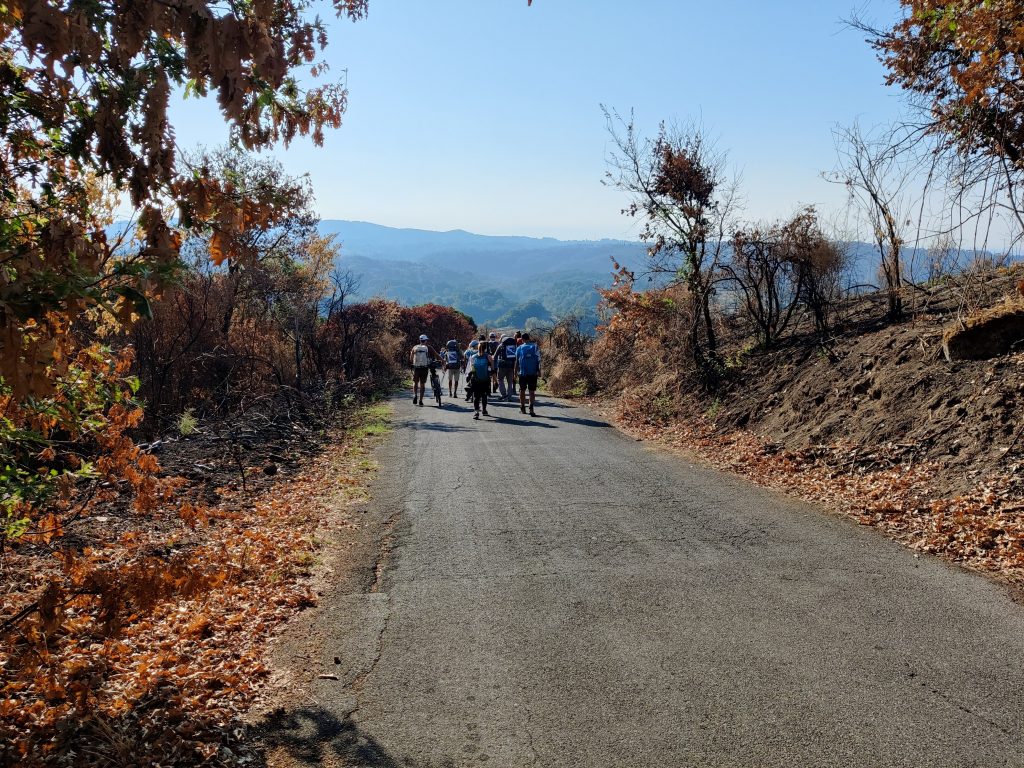
Day 1: For the first day of walking, start from Campagnano di Roma and reach La Storta, covering 23 km of moderate difficulty with some elevation changes. Along this stretch, you will arrive at the edge of Rome. There are several points of interest along the way, including the Valle del Sorbo, a valley of fields and forests that lies within the crater of an ancient volcano. Then, you’ll come across Formello, a small town famous for its ancient historic centre, where various Etruscan artefacts have been discovered, including a vase with the Etruscan alphabet, a finding that helped partially decipher this ancient language. Finally, a stop in Veio is a must—this town of Etruscan origin is home to the remains of the Portonaccio Sanctuary, where numerous terracotta pieces were found, including the famous Apollo of Veio, now housed in Rome.
Day 2: On the second day, continue from La Storta to Rome, a straightforward 19.4 km route leading directly into the capital. Taking the Via Cassia, after 5 km you will reach the Insugherata park. Following this, you’ll arrive at Monte Mario, or “the mountain of joy,” from where you can enjoy a stunning view of the Eternal City, a sight that pilgrims throughout history have been thrilled to see as they neared their final destination. Finally, continue your journey towards Rome, with a destination at St. Peter’s.
3-Day Itinerary (Acquapendente – Viterbo)
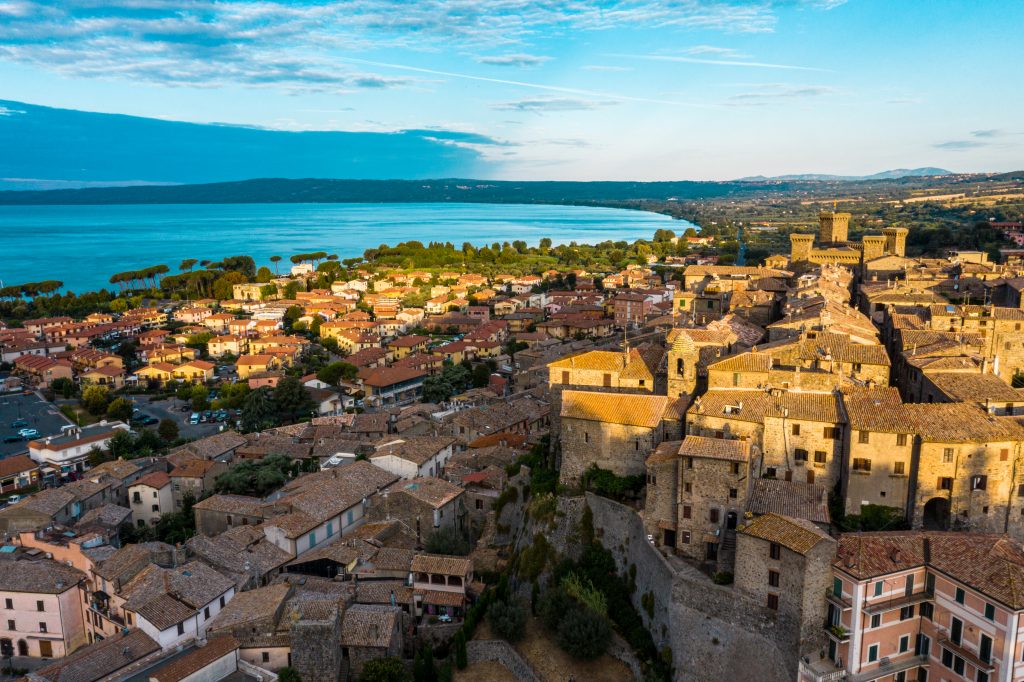
Day 1: For this three-day walk, the first stage covers the route from Acquapendente to Bolsena, a 22.8 km stretch with some elevation changes. Situated in the Tuscia region, at the foot of the Volsini mountains, the route offers breathtaking views over the landscape leading towards the clear, spring-fed waters of Lake Bolsena. You’ll walk through orchards, vineyards, and olive groves, and in spring, you might catch sight of the increasingly rare cornflower. The destination for this first day is Bolsena, a town famous for its catacombs, where the remains of the saint and martyr Cristina were discovered, her cult having spread along the Via Francigena.
Day 2: The second day involves walking from Bolsena to Montefiascone, covering 16.5 km of medium difficulty. The lakeside views continue on this stretch, with the first point of interest being the forest in the Turona park, known for its spring waters. Continuing towards Montefiascone, you’ll find the Rocca dei Papi and have the chance to taste the famous Est! Est!! Est!!! wine, as mentioned earlier. Just before arriving in Montefiascone, there’s a sign marking 100 km remaining to reach Rome—a milestone for those on longer pilgrimages.
Day 3: On the third and final day of this extended weekend, you’ll walk from Montefiascone to Viterbo, entering one of Lazio’s provinces. Along the way, you’ll walk on the beautiful cobblestone path of the ancient Via Cassia and, after 17.6 km, arrive in Viterbo, the city of the Popes. For those interested in a little self-care, we recommend the Terme del Bagnaccio, thermal springs dating from the Etrusco-Roman period. Entrance is fee-based, but you can also get your official pilgrimage stamp there.
5-Day Itinerary (Viterbo – Rome)
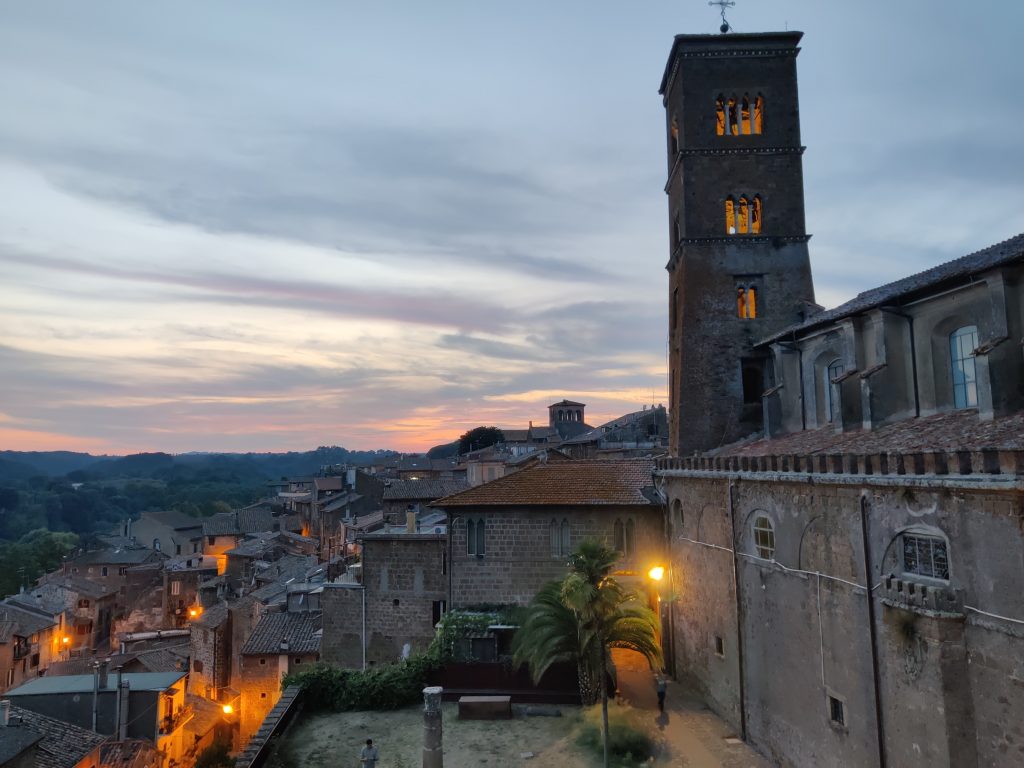
Day 1: On this extended bridge, the first stage takes you from Viterbo to Vetralla, a 21.9 km route of moderate difficulty with some elevation changes. It’s a wonderful naturalistic journey, passing through the Cimini mountains, among forests and breathtaking views, and also historical sites. Notable is San Martino al Cimino, a medieval village where a Cistercian abbey was founded. We recommend a visit to the abbey church, consecrated in 1225, one of the largest Cistercian churches in Italy.
Day 2: On the second day, you’ll walk from Vetralla to Sutri, covering 23.9 km. Along the way, don’t miss the Orlando Towers, first-century BC funerary monuments located along the ancient Via Cassia. The name “Orlando” is tied to the Carolingian myths that spread along the Via Francigena to Rome. Then, you’ll come across Capranica, an Etruscan town with a beautiful historic centre full of little churches and palaces. A stop at the Madonna del Piano church is a must, as it houses an image of the Madonna with Child, said to be miraculous. The jewel of this stage is Sutri itself, as mentioned earlier.
Day 3: Continuing on, the route from Sutri to Campagnano di Roma covers 23.8 km, mostly through vast meadows and pastures. After passing through Monterosi, take a break at the Monte Gelato waterfalls, nestled in nature, one of the most picturesque spots in the Treja Valley. Here, you’ll also find the remains of a Roman villa from the first century BC, along with a medieval tower and a water mill, “La Mola,” which operated until 1830 and now hosts a permanent exhibition on the local nature. Finally, you’ll reach Campagnano di Roma, once a summer retreat for Roman nobility and high-ranking clerics. Here, you can visit the Church of Pietà, the Collegiate of San Giovanni Battista, and the Fountain of the Dolphins.
Day 4: From Campagnano di Roma to La Storta.
Day 5: From La Storta to Rome.
Some Tips
Prepare your equipment
- Hiking boots: The choice of boots is crucial, especially for long distances. Opt for sturdy and comfortable footwear with good breathability and ample support for your feet. Lightweight hiking boots are ideal for longer routes. Note: the heavier your backpack, the more important it is that your boots have high ankle support to help with spinal flexibility. Here are some tips from our partner, Garmont.
- Backpack: Choose a comfortable, not overly heavy backpack. Ensure it has adjustable straps and good ventilation. It’s essential not to overload your bag—aim for no more than 10-15% of your body weight; only bring the essentials. Here are some suggestions from the Ferrino team.
- Clothing: Pack breathable, comfortable, and lightweight clothes. Depending on the season, add a waterproof jacket for protection against rain or wind, and a hat or cap for sun protection. If you’re not sure where to find them, take a look here.
- Trekking poles: These are very useful for reducing strain on the knees, especially on uphill or downhill sections. You can find them here.

Plan your stages and itineraries
- Distance and time: Each walking day involves distances ranging from 15 to 25 km. If you’re not accustomed to walking long distances, start with shorter stages. A good idea is to spread the route over several days according to your capabilities.
- Where to stay: Along the route, you’ll find a variety of accommodation options such as hostels, B&Bs, agriturismos, and convents. In some places, you can also take advantage of hospitality at pilgrim refuges. Be sure to book in advance, especially during peak seasons (spring and summer).
- How to reach the region: There are many ways to get to Lazio, but not all are environmentally friendly or low-impact, and not all are affiliated with the Via Francigena. That’s why we recommend reaching the region by FlixBus or Trenitalia trains. Both offer a 10% discount to holders of the official Credential.
- Flexibility: Not all stages have the same level of difficulty. Be flexible and, if necessary, adapt to the situation. Remember, the journey is not a race but a personal and spiritual discovery experience.
- Guide to northern Lazio: To avoid any inconveniences, we recommend carrying the Via Francigena guide from Terre di Mezzo, which not only includes itineraries but also provides plenty of advice on how to tackle the journey in the best possible way.
- The Credential: Every self-respecting pilgrim has one. Here is the official Credential of the Via Francigena, an essential companion to carry along the route to benefit from discounts and perks, as well as to track your progress with the original stamps from various locations along the way.

Safety and Health
- Water and food: Always carry at least 2 litres of water with you. Some stages of the journey may lack easily accessible water sources, so it’s important to refill at the main stops. Don’t forget to bring energy snacks like dried fruit, cereal bars, and nuts.
- Sun protection: The sun in southern Italy can be very strong, especially in the summer. Use high-protection sunscreen, sunglasses, and a hat.
- Rest: Listen to your body. Don’t hesitate to take breaks and rest when necessary. Muscles and joints may suffer during the walk, so taking recovery moments is important.






